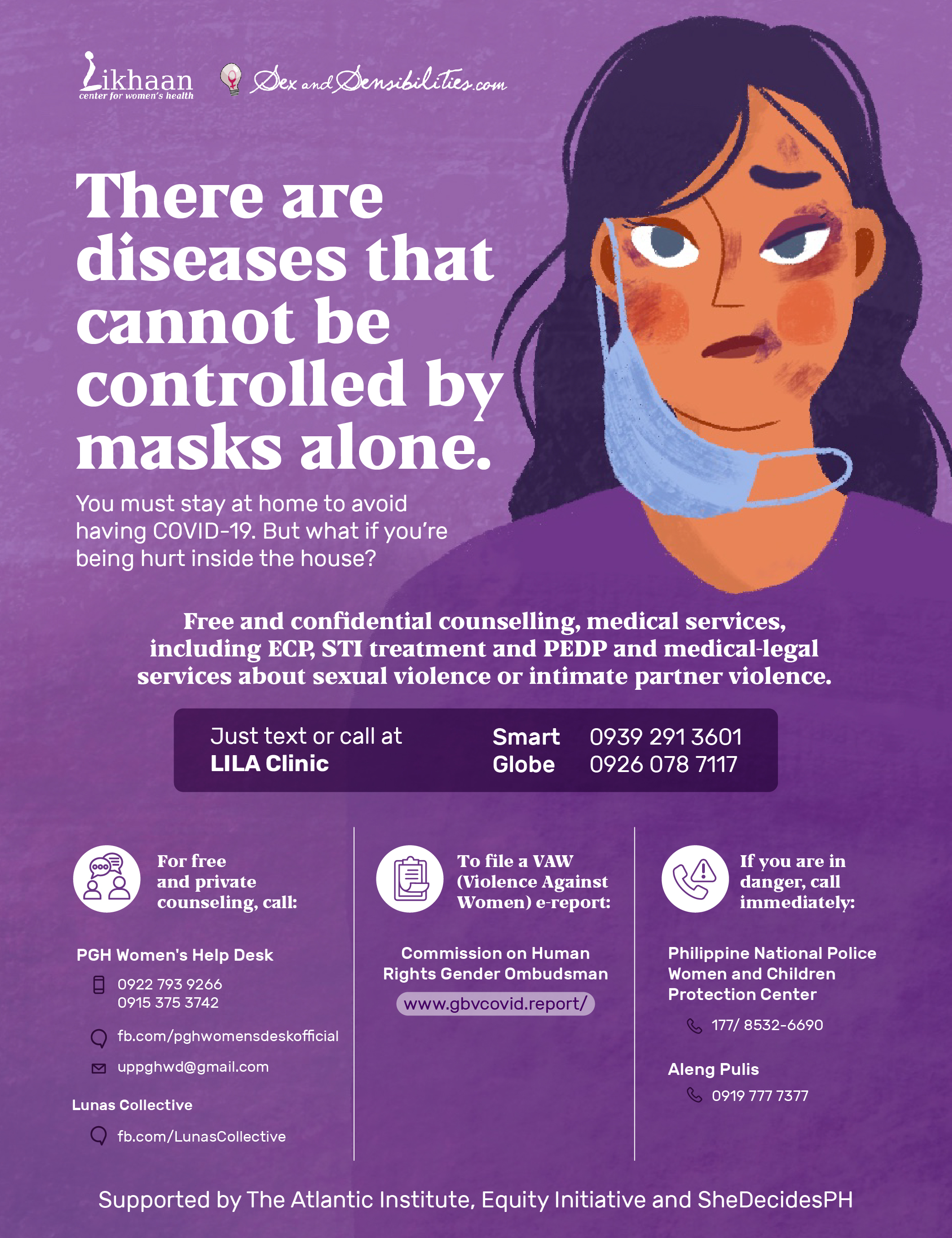SUMMARY
This is AI generated summarization, which may have errors. For context, always refer to the full article.
![[Dash of SAS] Eliminating gender-based violence starts at home](https://www.rappler.com/tachyon/2020/11/dash-of-sas-eliminate-gender-based-violence-November-28-2020.jpg)
Every year the United Nations marks November 25 as the start of 16 Days of Activism Against Gender-Based Violence.
According to global estimates published by the World Health Organization (WHO), about 1 in 3 women have experienced either physical and or sexual violence in their lifetime. To put that in some sort of context, you are likely to know someone who has experienced violence at the hands of an intimate or non-intimate partner – or you could be that someone.
To understand why violence against women is so prevalent means looking at who perpetrates that violence. Usually, it is an intimate partner or a trusted male relative like a father or brother.
As many as 38% of women who are murdered are killed by their male intimate partner or former partner. Two years ago, the United Nations Office on Drugs and Crime (UNODC) released data that showed that 137 women are killed every day by people that they know, making the home one of the most dangerous places for a woman.
This sobering figure is highlighted further by lockdown measures that have been instituted around the world to curb the spread of the coronavirus. Restricted movement, depression related to social isolation, and economic insecurity have made women more vulnerable to violence in their own home. Some countries have reported a five-fold increase in calls to domestic violence hotlines since the outbreak of COVID-19.
What you can do about it
The story behind these gruesome statistics is how much violence against women happens at home is inflicted by people they trust – by family. This fact has two detrimental effects. First it imposes silence because of the shame involved in admitting to yourself and others that someone you trusted to protect you and keep you safe is the same person who would harm you. Secondly, this silence has the effect of normalizing everyday acts of violence, the seemingly small acts of violence that we choose to overlook, dismiss or downplay without realizing that over time, it makes more violent forms of intimidation and aggression permissible.
In short, the space for inequality and imbalance that allows gender-based violence is created in our everyday interactions.
The other side of this is how we can each do our part in calling out violence and curbing it.
1. If you see violence in your neighborhood
Since the pandemic broke out last May, at least two people have told me about the violence they have heard or witnessed among neighbors in their condominium complexes. They were unsure when their responsibility to intervene or report the violence began.
A subtle way of sidestepping the line that differentiates a concerned neighbor from a meddling one is to send a note with a list of organizations where your neighbor can go for help and wrap it around a food dish that you can send over to your neighbor.

2. If you see violence on the street or at home, remember the 5 D’s
We can be exposed to violence as a bystander. Hollaback!, an organization that is committed to ending all forms of harassment, rolled out the 5 D’s as different ways you can help de-escalate a situation where someone is being harassed or possibly being put in a precarious situation.
Distract: Take an indirect approach to drawing attention from the target. Drop something or steer the the targeted person out of harm’s way by asking for directions and asking them to show you where a place is.
Delegate: Get help from a person of authority. If you are with another person, you can do this as a team. One person can employ the distract tactic while you look for someone who can help and delegate the situation to someone with authority.
Document: Film the harassment or violence. Take note of including important markers in your documentation such as the landmarks and street signs to indicate the location and the date and time. Film from a safe distance so as not to put yourself in danger. Lastly, make all efforts to secure the permission of the person (the target of the harassment) before you post online.
Delay: Some incidents happen so quickly that you don’t have time to react or intervene. In these cases, you can offer your support to the target by asking if they would like you to go with them to report the incident or just sit with them while they compose themselves and feel safe again. If you documented the incident, this can also be the time to ask what they would prefer you do with the footage.
Direct: The direct approach means calling out the violence or harassment as wrong. This is the most confrontational approach so be sure to assess your own safety before you decide to use this tactic.
However, the direct approach can be useful for educating others about different forms of violence and why it is wrong, especially in cases of violence against other people who are gender-different. For example, a relative is passive-aggressively shaming your cousin who is gender-different by correcting their way of dressing or making fun of the way they speak or talk. Gently but firmly remind that relative that making a person feel uncomfortable or unsafe is not right because everyone deserves respect.
3. Have continuous conversations with friends and family
Gender-based violence is normalized in our everyday interactions with others so our everyday dealings with one another represent opportunities to correct and educate.
Call friends out when they laugh at the sex jokes made by government officials at a disaster management meeting and state why it is both inappropriate and unacceptable. Show your displeasure when the president questions a female official about where she goes every evening and open up about it with other family members. If friends or relatives are making you uncomfortable with how they “joke” (because violence and harassment framed as a joke don’t take away from its insidiousness) about your love life or the absence of one, tell them you don’t appreciate it.
These may seem like small and negligible interventions but considering how sexism has gained national acceptance and tolerance under this administration, the task of correcting and changing has to start with us, even in small ways. – Rappler.com
Ana P. Santos writes about sexuality and gender. This column is a spin-off of the Facebook page Sex and Sensibilities.com. Ana is currently pursuing a graduate degree in Gender and Sexuality at the London School of Economics as a 2020 Chevening Scholar. Follow her on Twitter at @iamAnaSantos.
Add a comment
How does this make you feel?
![[WATCH] Spilling the Tea, Episode 5: Online violence against women](https://i.ytimg.com/vi/-GEKfffMuUs/hqdefault.jpg)


![[Dash of SAS] Making abortion a constitutional right](https://www.rappler.com/tachyon/2024/03/Its_true_-_Flickr_-_Josh_Parrish-1.jpg?resize=257%2C257&crop=125px%2C0px%2C768px%2C768px)
![[WATCH] Spoil me but respect me: A sugar baby’s story](https://www.rappler.com/tachyon/2024/03/titlecard-03.jpg?resize=257%2C257&crop_strategy=attention)

There are no comments yet. Add your comment to start the conversation.